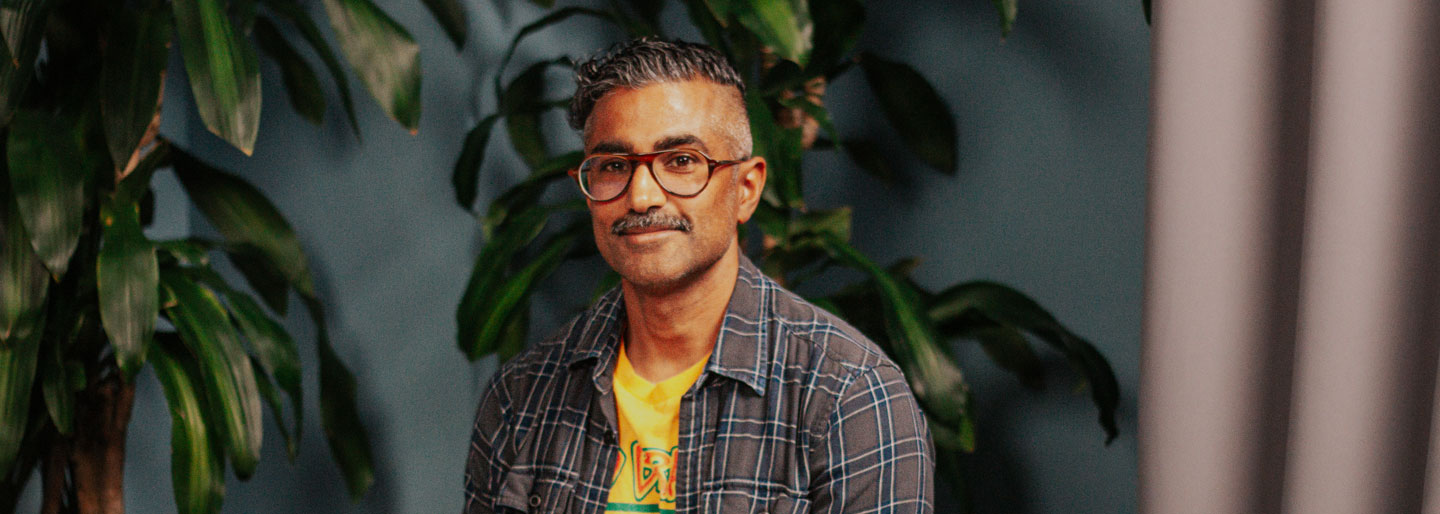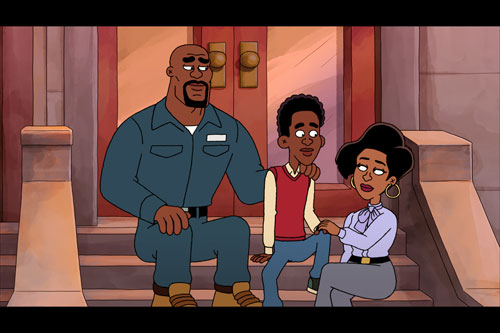Everybody Still Hates Chris’s Sanjay Shah shares his go-tos.
5/6/2025 • Evan Henerson
Direct Deposit of Residuals is Here
WGAW writers embrace the hassle-free benefits.

Everybody Still Hates Chris’s Sanjay Shah shares his go-tos.
Writer-producer Sanjay Shah began his career in stand-up comedy, and he still uses some of the tools of that medium to help land new jobs. During a recent visit to the WGAW’s 3rd & Fairfax podcast, the EP and showrunner of the animated series Everybody Still Hates Chris recounted some of the techniques that have worked for him. “Funny first,” he emphasizes.
Hear Yourself

People who are successful at pitching aren’t always skilled in the art of public speaking, but it can help.
“One thing I emphasize, even if you’re not a performer, is do stand-up or improv or whatever type of public speaking,” Shah says. “Stand-up, and my experience in it and my love for stand-up since I was little, has really helped me with my pitching. Because I approach it as if it’s stand-up. I have that same anxiety if they’re not laughing at a rate that is tonally in line with what I’m pitching. I have the instinct to worry about it.”
“When I’m done with the pitch, I’m immediately pulling out my pages and checking and dotting the things that worked and didn’t to rework it,” he adds. “Every single time I pitch it again, I’m improving on it, right? I never settle. I will reopen things that already sold and rewrite the pitches like it’s a set.”
Read and Control the Room
Shah emphasizes the importance of making things easy for the person on the other side of the table receiving the pitch. With this in mind, craft your pitch so that the recipient will be able to boil it down to digestible soundbites.
He recommends getting practice being on the other side of the room by listening to others pitch when you can.
“Notice how you react to pitches. Notice when your energy flags. Notice when your eyes or your mind drift,” he says. “You want people to be engaged and you want them to walk away even if they don’t want it, with a clear idea of what the show is, who the characters are, what the tone is and the ‘why’ of the show in a way that is sound bite-y without being sound bite-y.”

When I’m done with the pitch, I’m immediately pulling out my pages and checking and dotting the things that worked and didn’t to rework it.
- Sanjay Shah
Advice from a Colleague
Remember that “review and refine your pitch” counsel from earlier? Well, Shah takes it a step further by heeding a tip from fellow WGAW member Kevin Biegel with whom Shah worked on several previous shows.
“Once I have my pitch in a place where I like it, I record myself doing it,” Shah says. “Then when I’m walking the dog or in the car, I listen to it that week before I’m pitching. It sinks into your brain. You’re practicing it, but then you’re hearing yourself passively listening to it, too. It gives you an idea of where to adjust your inflections and stuff. These are little performance tricks more than anything.”
I’m pitching a comedy, but they’re tearing up…
To Shah’s thinking, all reactions are valuable since they signal a level of engagement on the listener’s part.
“A laugh is good, but if somebody feels something even if it’s sadness within a comedy pitch, that’s good,” Shah says. “I try to be attuned to whatever they’re leaning in on anything I’m saying and make sure that stays in. If it’s something that is a little bit more on the dramatic side, I can of course couch it in jokes on the other side.”